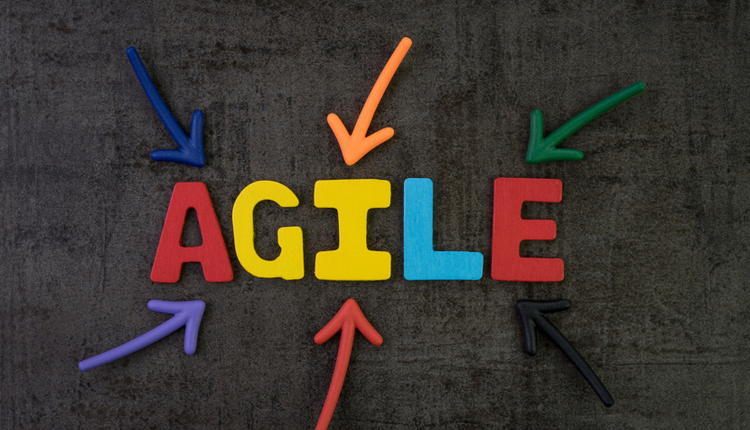
At the risk of offending everyone, why have you made a concerted effort to get all of your paper documents into electronic form but still print out signature documents and send them via costly snail mail? This is like buying SAP but still doing the majority of your work in Excel (oops, not a good example). Maybe you think e-signatures are not quite there yet, but look around at all of the things you are signing electronically—end-user license agreements (EULAs), credit card terminals, clicking the box, "I Agree," putting in your PIN and even entering a site with your password is a form of a signature. Wake UP! Not a day goes by that you are not signing something electronically.
Yet, with all of the technology you have invested in, let’s say Salesforce, Ariba, Oracle, Box, Dropbox, etc., you still write and generate the signature documents, like a non-disclosure agreement (NDA) or a contract, electronically and then print it out, put it in a FedEx pack ($$$), maybe include a return FedEx pack (more $$$) with the package, wait one or two weeks, repeatedly look up the FedEx tracking site to make sure it got there, interoffice it to the boss to get it fully executed with both signatures, send it back ($$$) to the customer and, after all that, put the paper into a file drawer in a file room. Incredible! I’ll bet you do not even take the time to scan the fully signed document and put that digital copy into a system or even a shared drive. I’ll even bet that some of you, upon request, take that contract out of the file room, make a copy of it and send the copy to the requestor via interoffice or regular mail. Yes?
Quick aside: A Luddite was an English textile worker who destroyed the newly emerging, labor-saving “power” looms that would cost him his job. So, are you afraid of losing your job because you will save the company time and money and maybe close a deal five days faster? It seems inconceivable that, today, we use some of the most sophisticated, high-tech software in the world and then revert back to printing a document out and sending it by mail. If this sounds like you, give yourself a dope slap and get with the program for crying out loud.
E-signatures are entirely legal within the US and for almost all countries. Go ahead and check on this. Look up the Uniform Electronic Transaction Act (UETA) of 1999 and the Electronic Signatures in Global and National Commerce Act (ESIGN) of 2000. There is also established case law around the use of and legality of e-signatures and electronic documents—see the Federal Rules of Evidence and the Uniform Rules of Evidence, which say, “A document or signature cannot be denied legal effect or enforceability solely because it is in electronic form.”
All right, you're saying, "Jeez louise Bud, get on with it, and give me the sales pitch already. OK. Here it is.
There are five, or so, major companies that offer e-signature and many smaller companies as well. Generally speaking, the “e-signature” document is delivered as a link to the document; you don’t actually email or send the document. The customer “signer” gets the link, clicks on it and signs it electronically using the signature application in the software. The signer does not usually need an account with the e-signature company that sends the document. When the sender of the document gets notice of a signed copy, he/she also signs it, and then, the customer signer gets a link to the executed document with both signatures.
The customer can download the fully signed document and save it to a chosen location. The signed document is a standalone document and can be opened, viewed and printed without the originating software application. This means that the signed and saved document can be copied, moved and deleted independently of the application that created it. Also, if the customer happens to delete or lose the document accidentally, he/she can request the originating company to send a copy with both signatures.
This is all done online and can happen as soon as both parties receive and sign the document. No paper is involved, no printing, no FedExing, no file cabinets, no file rooms, no lost documents in the sending process (I know FedEx said it was delivered, but I didn’t get it and didn’t sign for it! You have to resend the contract, please…) and no “lost” documents in the return process (Look, I sent it back via US Mail four days ago. If you lost internally, you’ll have to send it again. No, I didn’t pay for a postal certificate, it’s your contract…”
"OK Bud, e-sign sounds good on 'paper,' but my contracts are very complicated and have areas in the contract where the signer has to initial certain clauses, select yes/no provisions, select a checkbox and, in some cases, write information into the contract (like the name of a beneficiary), and because of this, it has to be in paper, and I have to get the customer’s information and signature first before I sign it. Quite often, the customer sends back an incomplete contract or they check all three boxes instead of selecting just one. So, let me know when the industry is up to speed and I’ll think about it again."
I’m here to tell you that the industry is up to speed and has even more functionality than you may be able to use. Most applications include the ability to initial clauses/pages, provide for check boxes and radio buttons, select a yes/no provision and write in responses where additional data is required, like a beneficiary name. You can even limit the signer to selecting only one checkbox, not all three, and you can force the signer to correctly complete all “completion” areas before they can “close” the contract. No more returned contracts that are incomplete.
e-sign applications are very capable at this point and are increasing their capabilities/functions as part of the arms race between companies. It is very unlikely that you have a signing process that can’t be handled by out-of-the-box functionality. If you do, most applications have an open application program interface (API) that allows you to add unique functionality. Many e-sign companies are integrated with popular software applications, like Ariba/SAP, Salesforce, NetSuite, Box, Dropbox and many others. When used as part of an application, like Ariba or Box, the e-sign software can be accessed and used from within the application. When used in Box or SharePoint, for example, the signed documents reside in Box or SharePoint in the repository set up for that purpose. Wouldn’t it be nice to be in the Tom & Jerry account and click on and view the completed contract instantly?
“One last question, Bud: My contracts are very proprietary and highly confidential. All signers have to sign an NDA prior to even getting the contract to sign. How do I know, and verify, that Mike Smith is Mike Smith?” This is called authenticating the signer, and most companies provide a variety of methods for ensuring that Mike Smith is Mike Smith. For example, you can require a SMS authentication, which is a text code sent to his/her phone (we’ve all done this before), require phone call authentication, assigned passwords, PIN number authentication and others, depending on the vendor. You can even, in some cases, require IP geographic location verification, which means the signer has to be in a certain designated geographic location in order to sign. So, someone who is supposed to be in San Francisco can’t sign if they are logged in from Las Vegas or Hong Kong. Pretty cool! By the way, you can send the NDA as an e-sign document.
Ready to renounce your Luddite ways? If you will take the time to check out the top e-sign applications, get a sales call conversation going and give it a 30-day free trial, I think you will find that there is a there there*.
*Gertrude Stein. Slightly misquoted from her original statement about Oakland, CA, “…there is no there there.”
Bud Porter-Roth has over 20 years of experience as an ECM consultant, with a focus on cloud collaboration, electronic document management, records management and paper document projects. Follow him on Twitter @BudPR or contact him at info@erms.com.
















